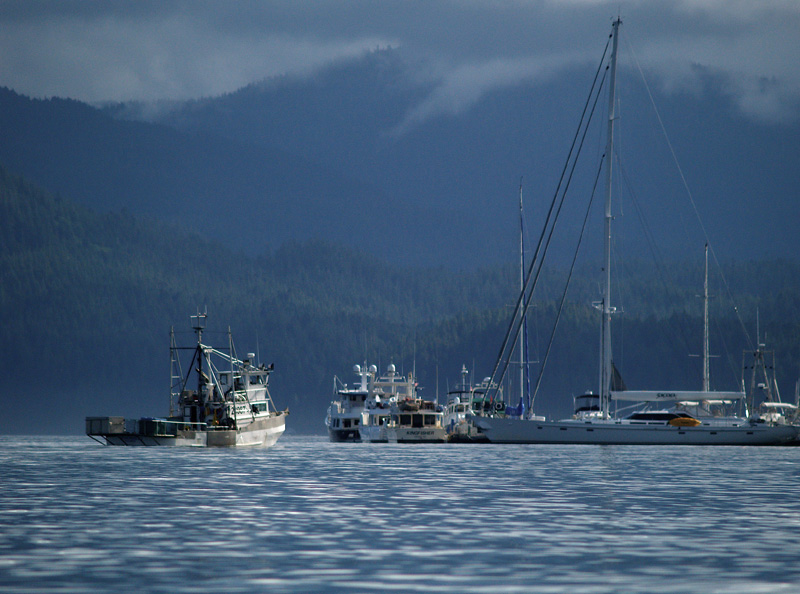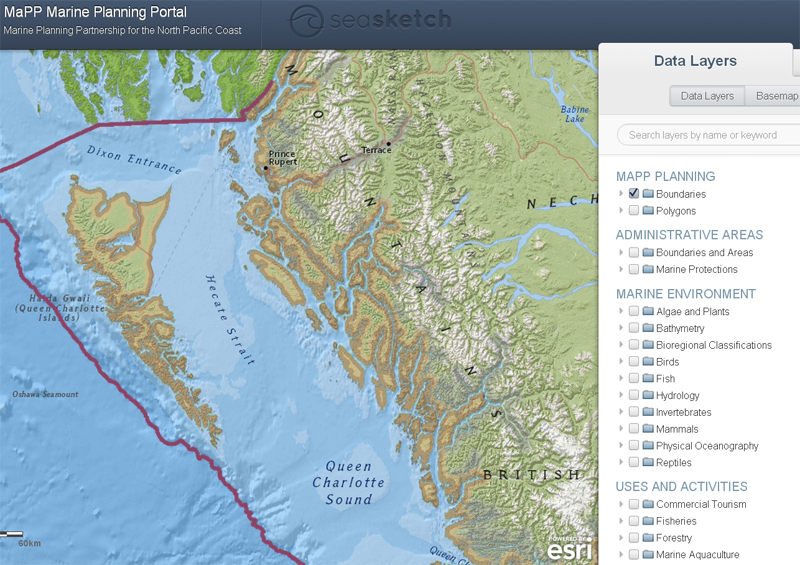Support for a Healthy Ocean
Do you care about the future of Canada’s Pacific Coast, keeping a healthy environment, and ensuring opportunities for long-term prosperity? Then you should check out MaPP. The Marine Planning Partnership for the North Pacific Coast (MaPP for short) is an initiative jointly led by a number of First Nations and British Columbia’s provincial government to plan for managing the various marine uses in B.C.’s North Coast.
Since 2011, MaPP has been working with stakeholders to get input into a Marine Plan for the region. What’s a Marine Plan? Basically, a blueprint that lays out how the region can manage growth and change while maintaining the healthy ecosystem that underpins the social, economic and culture values fundamental to everyone. What industries can we expect to see grow, and where? How will these affect other users? What priority areas need greater conservation measures? How will fishing, tourism, and traditional harvest activities be maintained and supported into the future? Where are the gaps and needs in terms of future training? These are the types of questions that the MaPP process is about.
WWF has followed the MaPP initiative closely, providing input on important ecosystem features and learning from other sectors about their priorities. Our collaborative work on climate change impacts on the Pacific has informed the process. We’ve made ocean noise pollution an issue for management within MaPP. Our work to identify eelgrass and estuary habitat – essential for salmon and other marine life – in the North Coast has been integrated into the planning tools. Working in collaboration with other conservation organizations on the coast, we’ve identified priority areas for marine conservation and protection. Moving forward, we will use our expertise in cumulative impacts assessment to ensure that the MaPP plan takes into consideration the accumulated impact of all off our human activities on ocean.
Interested in checking out some of this information in an interactive map form? Visit the Seasketch MaPP Portal – a communications and planning tool that houses a vast array of information about the ecological values and human uses at play on the coast. Easily navigable and loaded with information, this tool will draw you into the complexity and richness that is the North Pacific Coast.
Now nearing a round of public consultations this spring, the MaPP initiative has produced the first of a series of newsletters to give more information on the process. Check it out by clicking here. Better yet, you can subscribe to the MaPP newsletter to receive regular updates.



